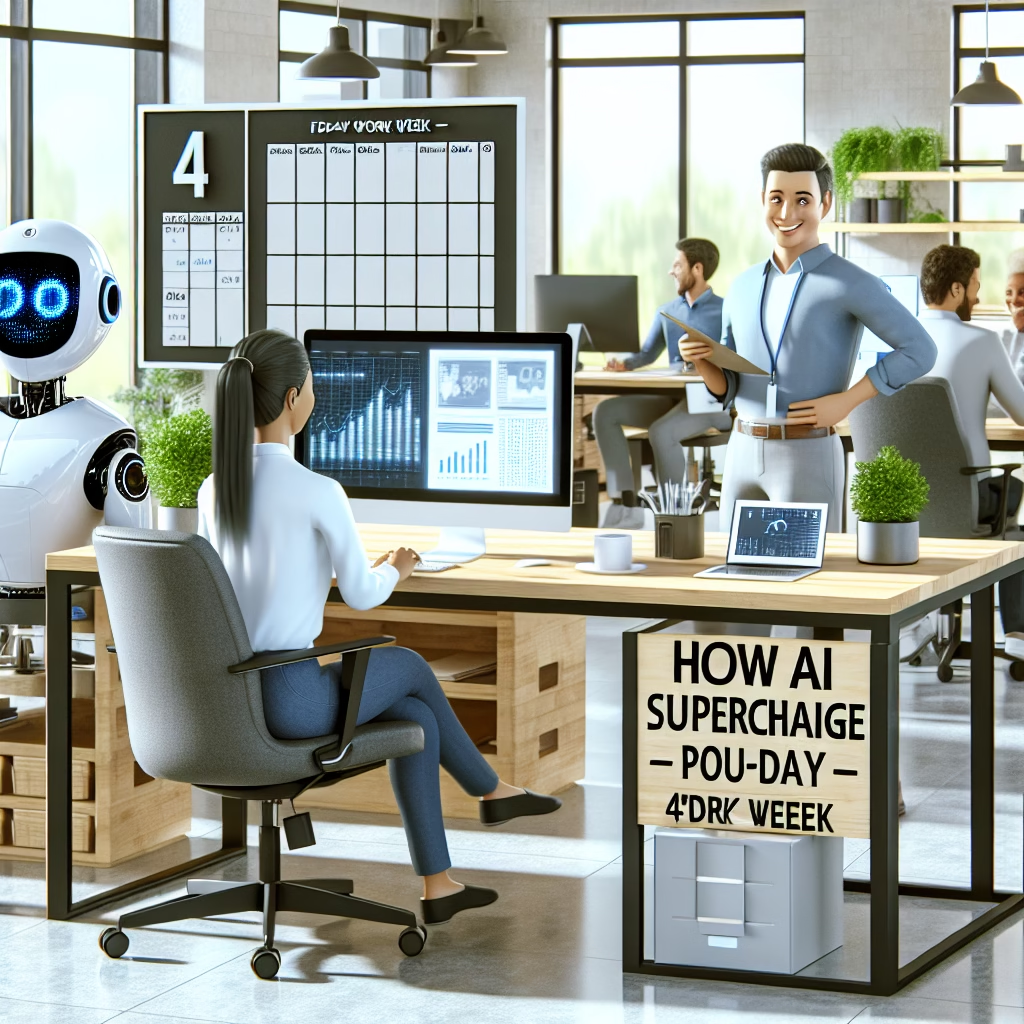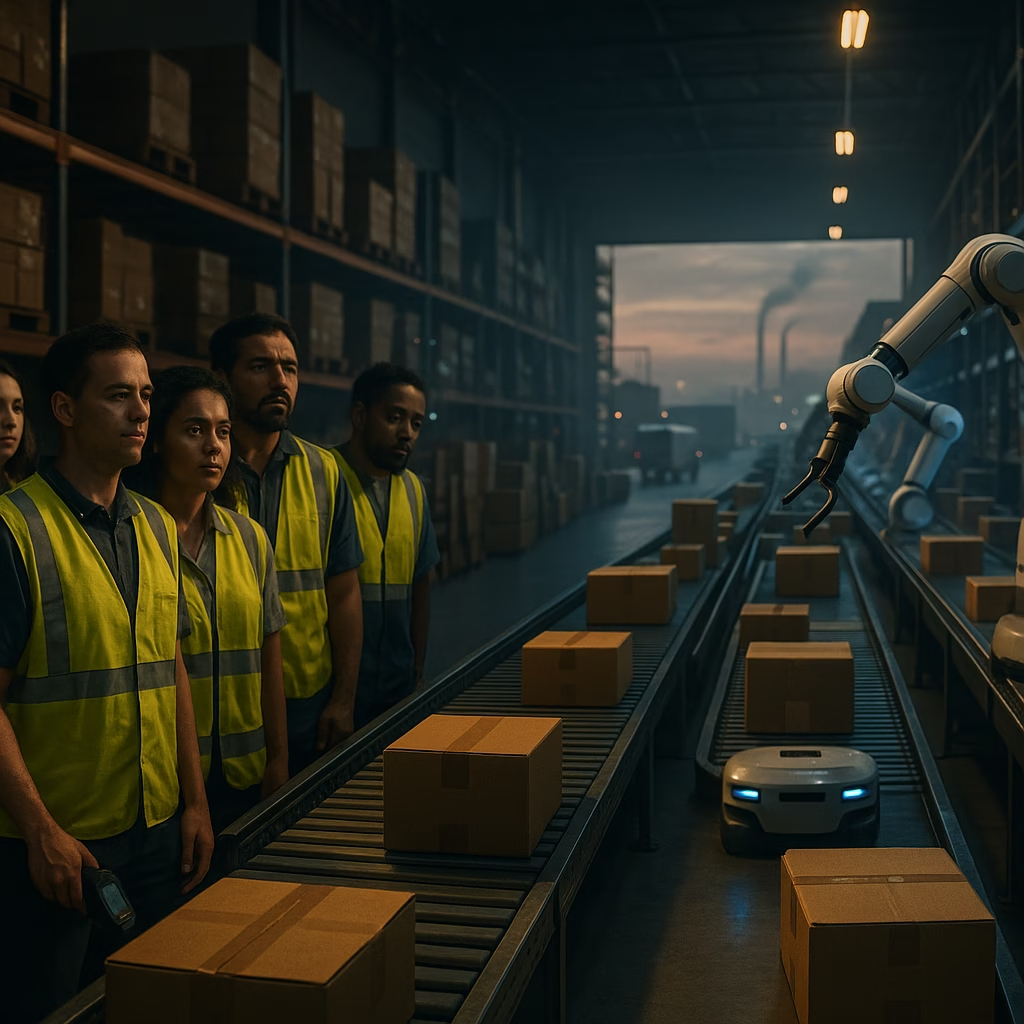How AI-Driven Productivity Is Fueling the Push for a Four-Day Workweek
Introduction: A New Era of Work
In today’s fast-evolving digital landscape, businesses are experiencing a transformative shift: the rapid rise of Artificial Intelligence (AI) is reshaping productivity—and with it, the very structure of the workweek. As AI tools streamline tasks, reduce grunt work, and increase overall employee efficiency, companies are increasingly exploring what was once considered a radical idea: the four-day workweek.
Not long ago, the concept of cutting a full day of work seemed impractical to most CEOs and HR leaders. But thanks to AI-enhanced workflows and promising early data from pilot programs, this idea is gaining traction. Welcome to the age where machines are changing not just how we work—but how much we have to work.
AI Is Supercharging Productivity
AI isn’t just in the background anymore; it’s at the heart of how modern teams manage workloads. From generative AI tools that handle writing and coding, to predictive analytics platforms and automated scheduling assistants, AI is drastically reducing the time it takes to complete everyday tasks.
Key industries are reporting major productivity lifts due to AI:
- Finance: Automated data entry and fraud detection mean faster, more accurate transaction processing.
- Tech: Generative AI tools like GitHub Copilot help developers write code more quickly, while AI-driven testing tools catch bugs early.
- Marketing: Content generation tools like ChatGPT and Jasper streamline copywriting, SEO optimization, and customer engagement strategies.
With repetitive and time-consuming tasks increasingly handled by AI systems, human employees are left to focus on creative, strategic, and interpersonal work—tasks that bring higher value and job satisfaction.
The Four-Day Workweek Movement Gains Momentum
Interest in the four-day workweek has existed for decades, but it never gained real traction until now. The game-changing arrival of workplace AI has accelerated serious discussion. Companies testing this model have reported positive outcomes in both employee satisfaction and business performance.
A 2022 UK pilot program saw 61 companies adopt a four-day schedule over six months. Of those:
- 92% continued with the new model after the pilot ended
- Employees reported less burnout and improved mental health
- Revenue held steady or even increased in some cases
Fast forward to 2025, and that experiment has turned into a broader trend. As AI continually reduces the number of hours required to complete the same work, businesses are reevaluating what productivity really looks like in a post-AI world.
Why a Four-Day Week Makes Business Sense
Cutting a workday doesn’t have to mean cutting productivity. In fact, for many companies, it’s proving to be just the opposite.
Here are the top benefits companies have reported when adopting a shortened workweek:
- Increased output per hour: With fewer days to get their work done, workers become more focused and efficient.
- Lower turnover: Happier employees stick around longer, saving companies on recruitment and training costs.
- Enhanced recruitment: A four-day week is a powerful differentiator in a competitive talent market.
And with AI tools reducing manual workloads, there’s a stronger case than ever for working smarter, not longer.
How Employees Are Adapting
Workers are not just adapting to AI—they’re embracing it. New research shows that employees who use AI in their daily workflows report higher job satisfaction, are more optimistic about their career development, and feel more in control of their schedules.
While there are understandable concerns about job displacement, the reality on the ground is more nuanced. Rather than replacing workers, AI is often reframing their roles. For many, that shift has brought greater flexibility and a better work-life balance.
According to recent surveys:
- 78% of workers who use AI daily believe it improves their job performance
- 66% say it helps reduce workplace stress
- Nearly 60% report they use freed-up time to upskill, collaborate, or innovate
If anything, AI is paving the way for more meaningful workplace contributions—not eliminating them.
Case Study: AI + Four-Day Week = Results
One prominent digital marketing firm, after integrating AI platforms into their workflow, decided to test a four-day workweek. A year later, they reported:
- 20% increase in client satisfaction thanks to faster turnaround and more personalized service
- 30% drop in employee sick days, attributed to reduced burnout
- Retention rate improvement of 40% since moving to the new schedule
The secret to their success? Pairing AI efficiency with a compassionate, forward-thinking workplace culture.
Roadblocks and Concerns
Despite the positives, shifting to a four-day workweek isn’t without its challenges.
Key obstacles include:
- Industry-specific constraints: Not all industries can easily move to four days, especially customer support, healthcare, or manufacturing.
- Change management: Leaders worry about maintaining output without micromanaging staff.
- Employee inequality: Some workers—especially lower-wage or frontline staff—may not benefit equally from these changes.
To overcome these hurdles, experts recommend a phased rollout, setting clear productivity benchmarks, and ensuring equitable access to AI tools and training.
Looking Ahead: The Future of Work and AI
If current trends continue, we’ll likely see a hybrid model become standard. Rather than a strict Monday-Thursday schedule, more companies may adopt:
- Flexible hours: Employees select their most productive windows and days
- AI-assisted task prioritization: New software recommendations based on urgency and workload
- Outcome-based management: Focus on deliverables, not clocked hours
As AI continues to mature, the link between hours spent and goals achieved will grow weaker—pushing businesses to rethink old models and forge new ones.
Conclusion: It’s Time to Work Smarter, Not Longer
AI isn’t just about automation—it’s about transformation. When implemented wisely, artificial intelligence does more than just speed things up. It gives workers and businesses the freedom to rethink productivity, profit, and balance.
The push for a four-day workweek isn’t just a trend. It’s a reflection of how work is evolving in an AI-powered economy. And as early adopters lead the way, one thing becomes clear: the future of work is smarter, more flexible, and—yes—shorter.
Now is the time for companies to ask: If AI can do more, why should we do more? The answer could lead not just to better business outcomes, but better lives for workers around the globe.
Want to prepare your organization for the future of work? Start by embracing AI—and maybe even giving Fridays back to your team.< lang="en">







Leave a Reply